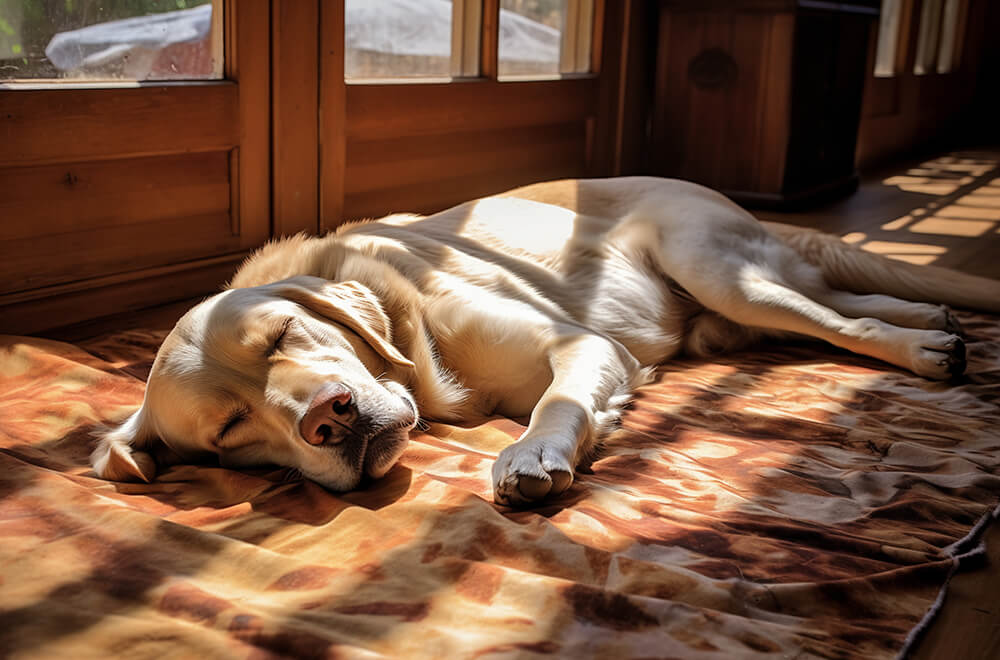
Keep Your Pet Cool This Summer: 7 Tips to Prevent Heatstroke in 2024
Summer’s here, and while we love the sunny days and warm weather, it’s important to remember that our furry friends need extra care during the hotter months. Heatstroke is a serious risk for pets, and it can be life-threatening if not addressed quickly. So, how can you protect your pet from the dangers of heatstroke? Let’s explore some tips to keep your four-legged buddies comfortable all summer long.
Contents
- How to Recognize Pet Heatstroke
- How to Keep Your Pet Cool and Safe in 7 Ways
- What to Do If Your Pet Shows Signs of Heatstroke
- Which Pets Are More Prone to Heatstroke?
How to Recognize Pet Heatstroke
Heatstroke can catch your pet off guard, especially on those sweltering summer days. It's crucial to recognize the early signs so you can take action quickly. Here are some key symptoms to watch for:
- Heavy Panting or Rapid Breathing: Sure, pets pant to cool down, but if their breathing becomes fast and labored, it could be a sign of heatstroke—especially in short-nosed breeds like Pugs or Bulldogs.
- Excessive Drooling: If your dog or cat suddenly starts drooling excessively, and their tongue turns red or feels unusually warm, it’s time to take action.
- Lethargy or Odd Behavior: Notice your pet acting sluggish like they just don’t want to move, or maybe they’re more anxious than usual? These could be red flags that they’re overheating.
- High Body Temperature: Your pet’s normal temp is between 99.5°F and 102.5°F. If they feel unusually warm—especially around the ears or belly—it’s a good idea to check with a thermometer.
- Vomiting or Diarrhea: These can be scary symptoms, and if they happen during hot weather, it’s a major warning sign of heatstroke. If your pet seems weak or unsteady, don’t wait—get them to a cooler spot and call your vet.
How to Keep Your Pet Cool and Safe in 7 Ways
The best way to prevent heatstroke? Don’t let it happen in the first place! Here are some simple ways to keep your pet cool and safe:
1. Create a Cool Hangout Spot
Ensure your pet has a shady place to relax. If they enjoy being outside, set up a shaded area, or better yet, bring them indoors where it’s cooler. A fan or air conditioning can make a world of difference in keeping them comfy.
2. Keep Fresh Water Handy
Staying hydrated is crucial during the hot months. Always have plenty of fresh water available. If your pet isn’t a big water drinker, try tossing in a few ice cubes to make it more enticing.
3. Avoid the Midday Heat
The middle of the day is typically the hottest. To protect your pet, avoid walks or outdoor play during these hours. Instead, opt for early morning or late evening outings when the temperatures are more manageable.
5. Use Cooling Products
Invest in a cooling mat or pet-friendly ice packs to help your pet stay cool when the temperature rises. These simple tools can be incredibly effective in preventing overheating.
6. Install Pet Cameras
Worried about your pet while you’re at work? A smart camera like the Litolkam P1 can help. With real-time video and mobile access, you can check on your pet anytime, giving you peace of mind that they’re safe and sound, even when you’re not around.
7. Utilize Automatic Feeders and Water Fountains
These gadgets are a lifesaver during the summer months. They keep your pet hydrated and well-fed, even when you’re out for the day. Set them up to dispense water and food at regular intervals, ensuring your pet never goes without.
What to Do If Your Pet Shows Signs of Heatstroke
Even with all the precautions, accidents can happen. If you think your pet might be suffering from heatstroke, here’s what to do:
- Cool Them Down Fast: Move your pet to a shaded or air-conditioned area right away. Use a damp towel on their head and belly to help bring their temperature down.
- Offer Water: Give your pet small amounts of cool (not cold) water to drink. Don’t force them to drink too much at once.
- See a Vet: If your pet doesn’t improve quickly, or if you’re unsure whether it’s heatstroke, get them to the vet immediately.
What Kind of Pets Are More Prone to Heatstroke?
Some pets are more vulnerable to heatstroke than others.
- Senior Pets: Older pets often have a harder time regulating their body temperature.
- Short-Nosed Breeds: Pugs, Bulldogs, and similar breeds are at higher risk due to their shorter airways, which make it harder for them to cool down through panting.
- Overweight Pets: Carrying extra weight makes it harder for pets to cool down, putting them at greater risk for heatstroke.
Summer can be a blast, but the heat is no joke for our pets. By watching for heatstroke symptoms, taking preventive measures, and knowing how to respond in an emergency, you can ensure your pet stays healthy and happy all summer long